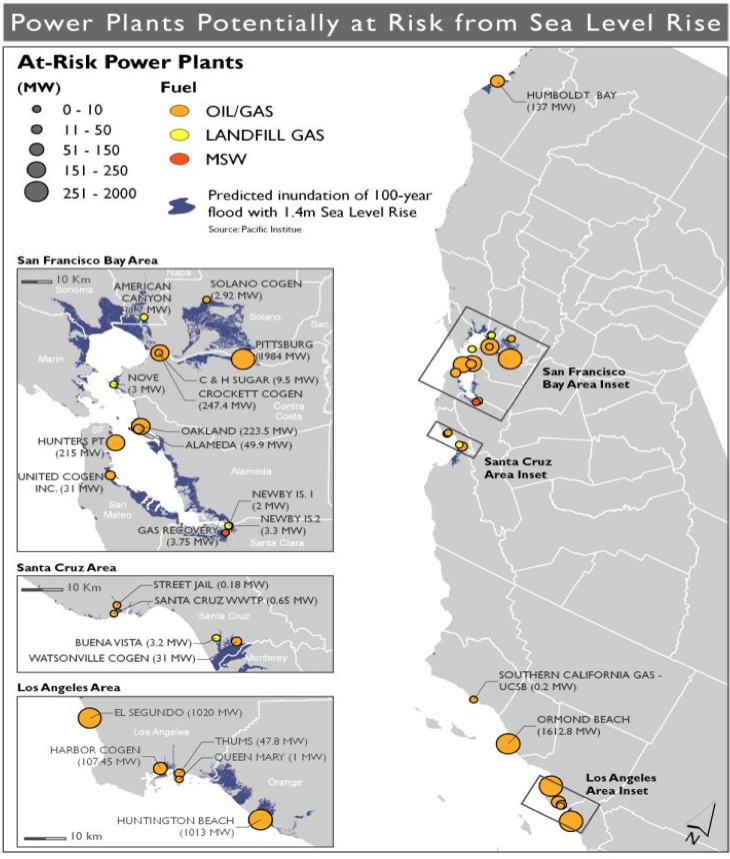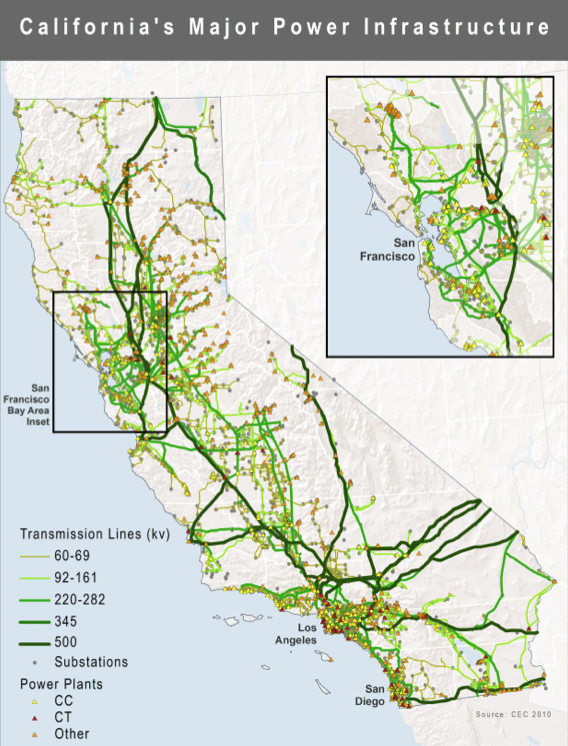If you think it’s been unusually hot lately, just wait—by the end of the century, temperatures in California are expected to rise significantly. What that means for human health, agriculture, water supply and a range of other spheres is being studied by experts, but what it will mean for our electricity system had not been examined until now, in an analysis by Lawrence Berkeley National Laboratory (Berkeley Lab) researchers.
Looking at a range of future climate scenarios, Larry Dale, an economist at Berkeley Lab, found that California may need as much as 30 to 40 percent more generation and transmission capacity per capita by the end of the century because of the negative effect of higher temperatures on equipment performance. “Most people have been looking at what will be the cost of greenhouse gas emissions from systems like electricity, but this is turning that around: what about the climate change impacts on the very thing creating those emissions?” said Dale. “To deal with that, you have to create yet more emissions.”
Their report, “Estimating Risk to California Energy Infrastructure from Projected Climate Change,” was prepared for the California Energy Commission (CEC) as part of the state’s third major assessment on climate change. It investigates the effect of warmer temperatures, more frequent wildfires and sea level rise on all major components of our electricity system, including thermal power plants, gas storage tanks and pipelines, substations and transmission lines.
Besides the need for increased capacity, the researchers also found that up to 25 coastal power plants and 86 substations are at risk of flooding or compromised operation due to sea level rise and storm surges. Additionally, because climate change is expected to increase the size, frequency and severity for wildfires, transmission and distribution lines are at serious risk.
Despite the large potential impacts, the report says that widespread outages and other economic damage can be avoided with proper planning. “While we predict that climate change will increase the cost of providing electricity, if properly anticipated, the frequency of electricity outages should not increase,” the report said. “Anticipated impacts of climate change can be addressed with increases in generating, transmission and distribution capacity, as well as through improvements to equipment design.”
Dale estimates that preparing for expected climate change impacts could cost billions of dollars in upgrades to the electricity system. “This was one of the costliest of the impacts in the CEC assessment, compared to climate change impacts on water supply, hydropower, agriculture and even health,” he said.
By the year 2100, average temperatures in California are expected to rise significantly, by anywhere from 2.8 to 8.6 degrees Fahrenheit above 2000 averages, depending on emissions scenarios. Moreover heat waves are expected to be more frequent, hotter and longer. This will put enormous burden on peak electricity requirements for our electrical system, which is what the Berkeley Lab researchers evaluated for their study. Hot summer days are usually when the power system experiences peak demand, so power plants plan their future capacity needs around projected peak demand.
Higher temperatures reduce the capacity and efficiency of natural gas turbines in several ways. There are existing technologies to make power plants less sensitive to temperature, but they are costlier, Dale said. The study found that atmospheric warming may necessitate up to 38 percent additional peak generation capacity and up to 31 percent additional transmission capacity by the end of the century.
Dale and his co-authors, which include Berkeley Lab researchers Jayant Sathaye, Peter Larsen and Gary Fitts, also looked at energy structures vulnerable to rising sea levels. In the last 100 years, California’s sea level has increased by about half a foot. Climate studies project a substantially greater rise over the coming century, ranging from 3.3 to 4.6 feet depending on emissions levels. Extreme sea level events such as storm surges during winter storms will also become more frequent.

This map shows power plants potentially at risk to a 100-year flood from a sea level rise of 1.4 meters. (Source: Pacific Institute)
The Berkeley Lab study found that if the sea level rises by 4.6 feet, a 100-year flood event could inundate as many as 25 power plants (13 of them in the San Francisco Bay Area), scores of electricity substations and at least one natural gas storage facility on the coast. However, flooding can be avoided with proper planning, such as building or strengthening levees.
More importantly, the definition of extreme weather events, such as what constitutes a 100-year flood, will have to be changed to anticipate the effects of climate change. “Safety margins that may have been sufficient under historical conditions may need to be increased to deal with future event frequencies,” the report says.
A third risk the researchers examined was from wildfires, which are expected to increase in size and frequency in California in coming decades. The danger to transmission lines is not just from being destroyed by flames but also in damage caused by heat, smoke, particulate matter from a fire and even the effects of firefighting. In some parts of the state, the likelihood of fires occurring near important transmission lines is expected to go up by more than 300 percent by 2100.
While proper planning will offset many of the possible consequences of climate change, Dale and his co-authors note that anticipating the impacts of climate change is not easy due to climate uncertainty. For example, it’s difficult to know if climate change will affect wind. Plus the future success of current efforts to curb emissions of heat-trapping gases is impossible to predict.
As for what’s next, Dale has several directions he would like to pursue, such as examining how higher use of renewable sources of energy, such as wind and solar, may affect their results, expanding the geographic scope of the study and building a model of the electrical system in operation. “In this study we assumed everything can be planned for,” he said. “I’d like to be able to model the system and also model when the system is surprised and an unplanned event occurs. There is another set of costs of not enough planning to deal with an extreme event, such as a hot summer day 50 years from now.”
# # #
Lawrence Berkeley National Laboratory addresses the world’s most urgent scientific challenges by advancing sustainable energy, protecting human health, creating new materials, and revealing the origin and fate of the universe. Founded in 1931, Berkeley Lab’s scientific expertise has been recognized with 13 Nobel prizes. The University of California manages Berkeley Lab for the U.S. Department of Energy’s Office of Science. For more, visit www.lbl.gov.
